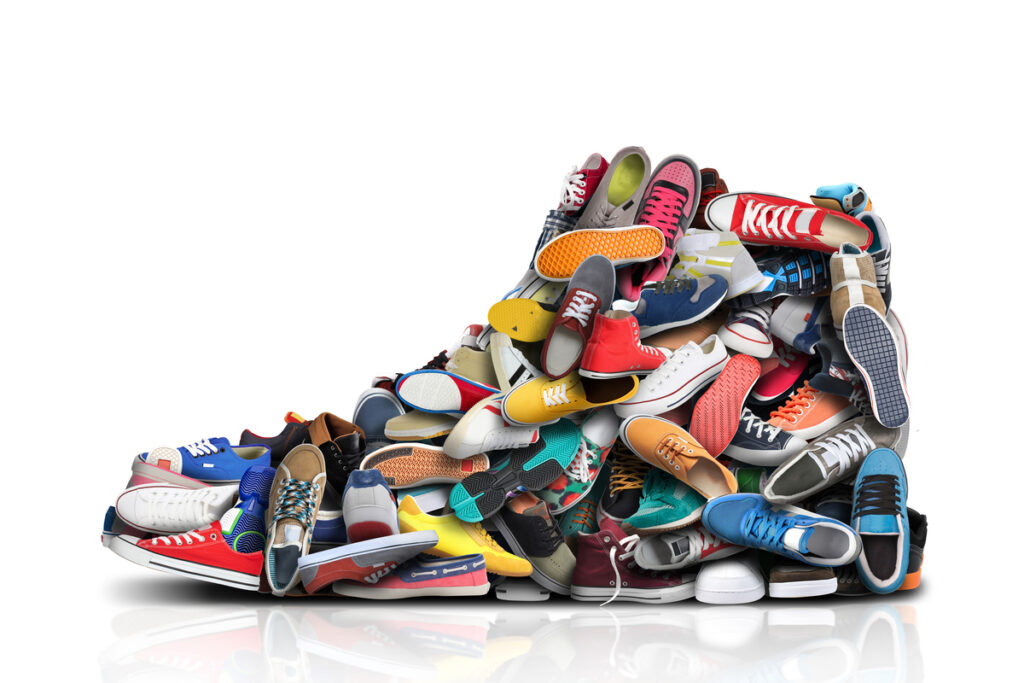Sneaker design is a dynamic and innovative field that combines art, fashion, and function. The process of creating a new sneaker involves careful consideration of various key elements to ensure the final product is not only stylish but also comfortable and durable.
In this article, we will delve into the top 10 key elements that every sneaker designer should master to create exceptional footwear.
Materials Selection
One of the most crucial aspects of sneaker design is choosing the right materials. From premium leather to high-tech synthetic fabrics, the materials used can significantly impact the overall look and performance of the sneaker.
Designers must consider factors such as durability, breathability, and flexibility when selecting materials to ensure the final product meets both aesthetic and functional requirements.
Silhouette
The silhouette of a sneaker refers to its overall shape and form. A well-designed silhouette can make a sneaker stand out and become instantly recognizable.
Designers often experiment with different shapes and proportions to create unique and eye-catching silhouettes that appeal to consumers and set their designs apart from the competition.
Color and Texture
Color plays a vital role in sneaker design, as it can evoke emotions, convey brand identity, and attract consumers. Designers must carefully select the right color palette to complement the silhouette and materials of the sneaker.
Additionally, incorporating different textures, such as suede, mesh, or patent leather, can add depth and visual interest to the design.
Branding
Branding is an essential element of sneaker design that helps establish a connection between the product and the consumer. From iconic logos to signature design details, branding elements should be integrated seamlessly into the overall design to create a cohesive and recognizable aesthetic.
Strong branding can also contribute to the perceived value of the sneaker and influence consumer purchasing decisions.
Comfort and Fit
While aesthetics are important, comfort and fit are equally crucial considerations in sneaker design. Designers must prioritize functionality and ergonomics to ensure that the sneaker provides adequate support, cushioning, and flexibility for the wearer.
Factors such as midsole cushioning, heel support, and arch structure can significantly impact the overall comfort and performance of the sneaker.
Construction Techniques
The way a sneaker is constructed can impact its durability, flexibility, and overall quality. Designers must have a solid understanding of different construction techniques, such as cementing, stitching, or vulcanizing, to choose the most suitable method for their design.
Attention to detail during the construction process is essential to ensure the final product meets industry standards and customer expectations.
Innovation and Technology
Innovation and technology play a significant role in pushing the boundaries of sneaker design. From 3D printing to sustainable materials, incorporating the latest advancements can help designers create cutting-edge and environmentally friendly footwear.
Staying informed about emerging technologies and trends in the industry is essential for staying competitive and relevant in the ever-evolving sneaker market.
Cultural and Historical References
Sneaker design often draws inspiration from various cultural and historical references, such as art, music, sports, and streetwear. Understanding the significance of these references can enrich the design process and imbue the sneaker with a deeper narrative and meaning.
By incorporating elements of cultural and historical significance, designers can create sneakers that resonate with consumers on a personal and emotional level.
Collaboration and Networking
Collaboration and networking are essential aspects of the sneaker design industry, as they provide opportunities to learn from and collaborate with other professionals in the field.
Networking with industry experts, attending workshops and events, and seeking mentorship can help aspiring designers gain valuable insights and guidance to further develop their skills and advance their careers.
Attention to Detail
Last but not least, attention to detail is a hallmark of exceptional sneaker design. From the stitching and seam placement to the laces and hardware, every element of the sneaker should be meticulously crafted to ensure a high-quality finish.
Designers who pay attention to the smallest details can create sneakers that exude craftsmanship and excellence, setting their designs apart in a crowded market.
Conclusion
Mastering the key elements of sneaker design is essential for aspiring designers looking to make their mark in the industry. By focusing on the said elements, designers can create sneakers that are not only visually appealing but also functional, comfortable, and culturally relevant.
Key Takeaways:
- Choosing the right materials is crucial for balancing style, durability, and comfort.
- A distinct silhouette makes sneakers recognizable and visually appealing.
- Color and texture choices can enhance appeal, reflect identity, and attract consumers.
- Seamless branding elements strengthen recognition and perceived value.
- Ensuring comfort and fit with good support and flexibility is essential.
- Construction techniques like stitching improve durability and quality.
- Incorporating technology and sustainable materials keeps designs innovative.
- Drawing from cultural influences adds depth and consumer connection.
- Collaborating and networking enhance learning and creative growth.
- Attention to small details showcases the craftsmanship and sets designs apart.
For those looking to further enhance their skills and knowledge in sneaker design, consider enrolling in the FIT x Complex Sneaker Essentials online course and certificate program.
This comprehensive program offers valuable insights and practical guidance from industry experts to help you elevate your sneaker design expertise and advance your career in this exciting field.








